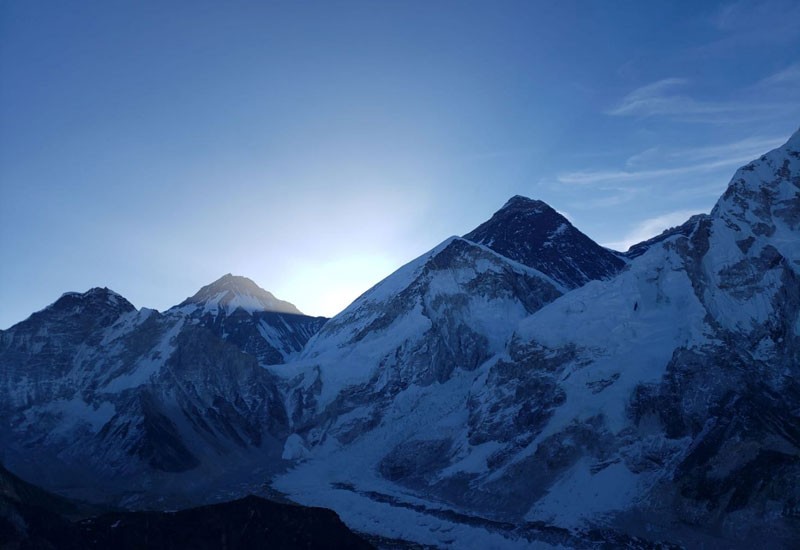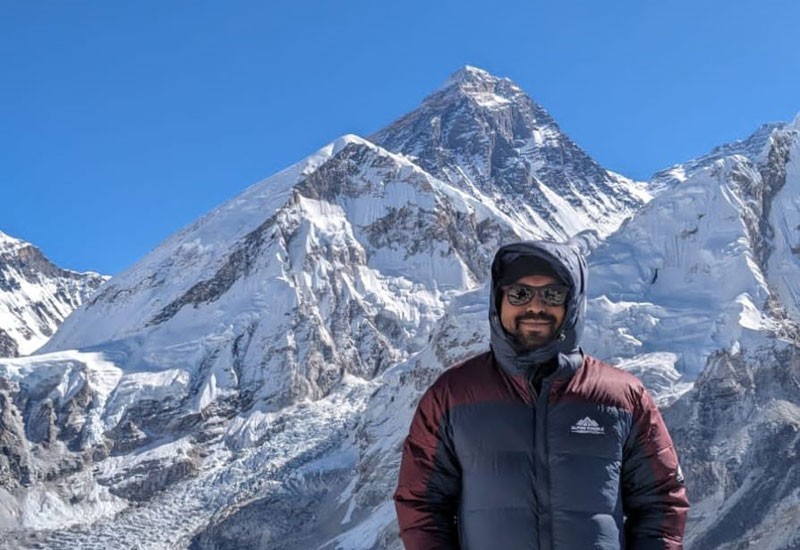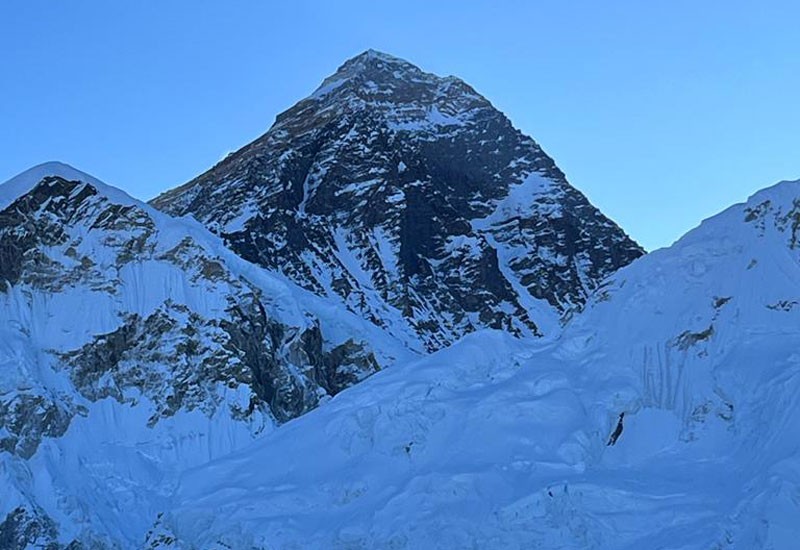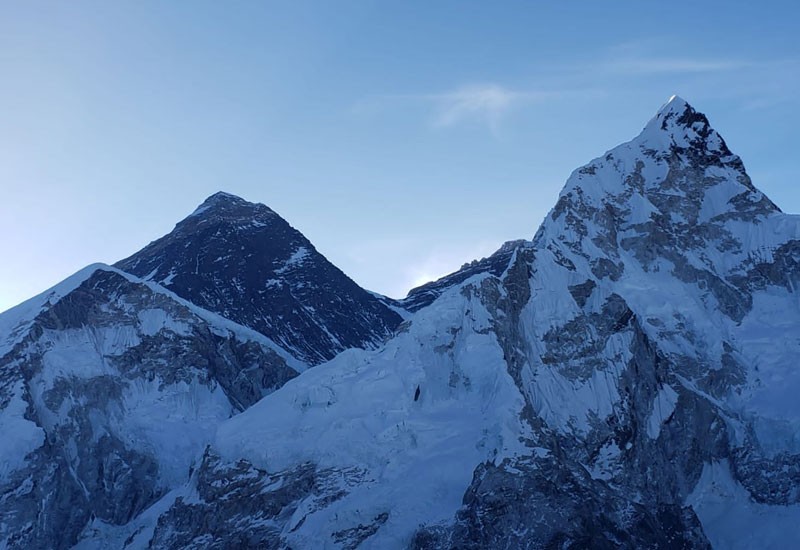
Trekking in Nepal
By Alpine

Mount Everest, standing tall at an elevation of 8,848.86 meters (29,031.7 feet) above sea level, is renowned as the highest peak in the world. Adventurers from all around the world have their sights set on Mount Everest. It is, in fact, quite a popular destination for trekking and mountaineering.
Falling in the Himalayan range that extends from India to Pakistan, Afghanistan, China, Bhutan, and Nepal, it is one of the youngest mountains on earth. And Nepal, which happens to be the home of Everest, is known as the “roof of the world.” This mighty creation of nature is interconnected with the faith of the communities of the mountains.
The highest peak in the world is Mount Everest. Still, its Nepali name is “Sagarmatha'', “Sagar'' meaning "sky,” and “Matha'' meaning "forehead," so it is the “forehead of the sky”. In Tibetan, Everest is known as “Chomolongma'' or “Qomolangma”, meaning “Mother Goddess of the World.” In fact, the name “Everest '' came about in 1865 following the recommendations of Andrew Waugh, the British Surveyor General of India, after Sir George Everest, who was Waugh's predecessor in the post of Surveyor General.

Before being named “Everest” and getting declared as the highest peak, it was initially known as “Gamma” and then changed to “Peak B.”. After being suspected to be the highest peak in the world, after the measurements were done and confirmed to be the height peak, it was named “Peak XV.” Then, in 1956, it was named “Mont Everest,” and again, in 1865, the Royal Geographic Society pronounced the official name "Mount Everest.”
In 1921, George Mallory and his British expedition team set out for the first ever expedition of Mount Everest, which only led until the North Col. Then again, the second attempt was made in 1922, where they were able to climb up to 8000 meters before retreating. In their third attempt in 1924, George Mallory and Andrew Irvine are believed to have slipped, got injured, and succumbed to the cold, leading to their demise.

There were many attempts made to conquer Everest after the first attempt but to no avail. But on May 29, 1953, Sir Edmund Hillary, a mountaineer from New Zealand and a Nepali climber, Tenzing Norgay Sherpa, successfully summited the highest mountain in the world. 32 years after the first attempt, Mount Everest, the highest mountain in the world, was finally conquered.
Mount Everest is located in the Himalayan Range, which was formed by the collision of the Tibetan and Indian tectonic plates. It is located in the northeastern part of Nepal, in the Solukhumbu district. It falls on the coordinates of 27°59′18″N 86°55′31″E and lies in the Mahalangur Himalayan Range, which spans the north-east of Nepal and south-central Tibet.
The expedition of Everest is mostly conducted from the south base camp, which falls in Nepal but it can also be done from the north base camp, which is situated in Tibet. Nevertheless, Everest is a peak destination for adventurers seeking solace in the higher altitudes.
Mount Everest is undoubtedly one of the coldest places on earth. The temperature on Everest is below freezing all year round, which makes it a challenging place to be on the planet. In winter, temperatures fall to -36°C at night and -33°C during the day. In summer, temperatures range from -19°C at night to 0°C during the day.

The weather pattern can be quite unpredictable when it comes to higher-altitude mountains. One of the major problems is the wind. On average, the wind is 160 km/h (100 mph) but it can easily get up to 285 km/h (177 mph) which can easily blow away a person off Everest. However, climate change has now become a very big issue, as it has played a part in the change and destabilization of the Khumbu Glacier.
The most favored time for the Everest expedition is considered to be the spring (March–May) season. The temperature and weather around this time are generally stable, as it is still pre-monsoon. Not only that, but the temperatures are relatively warmer and the length of the day is longer too.
Autumn (September–November) is also a good season for expeditions, but it is significantly colder. However, the views are crisp and clear, as it is post-monsoon. Thus, the majority of climbers prefer to summit in the spring season.
The journey for the expedition to the world’s highest peak begins with a hair-raising flight to Lukla. As the expedition takes place in spring and autumn, the flight to Lukla will be directed to Manthali, Ramechhap. It is a 3–4-hour drive from Kathmandu, where you will finally board a flight to Lukla. Following your flight, you will begin your trek alongside the Dudh Koshi River and the trail of the classic Everest Base Camp, which is the most popular choice.
The trail will take you through beautiful Sherpa villages like Namche Bazaar, Tengboche, Dingboche, Lobuche, Gorak Shep, Kala Patthar, and finally Everest Base Camp, which is the starting point of the Mount Everest expedition.
Mount Everest, the name itself holds a significant weight as the highest point on earth. It already contributes to the ecosystem substantially. It sustains the glaciers and the water systems that get collected in lakes and rivers. It also has great geological and meteorological importance.
The Sherpa and Tibetan communities living near the mountain hold Mount Everest as an essential part of their livelihood and culture. They consider Everest to be a sacred site. Everest also has a greater impact on tourism and the economy, as thousands of tourists come annually for the Everest trek or expedition.
And lastly, Everest has become synonymous with challenge and achievement. The successful summits are inspiring millions of people around the world while also remembering those who died during the expeditions.
Naturally, reaching the top of Mount Everest is no easy feat. It requires an equal level of preparation and dedication, both physically and mentally. Therefore, having prior experience summiting 6000 meters, 7000 meters, or even 8000 meters of mountains is essential. Summiting the world’s tallest peak will undoubtedly push you to your limits.

You will also need an experienced climbing guide and support from Sherpas for a successful summit. You should also obtain a climbing permit from the government. The company will handle the accommodations and logistics for you while you prepare for the summit. The push for the summit is done with heavy preparation and proper acclimatization.
But once you reach the top of Everest, it is surely an unmatched experience. During the golden hour, you can see the entirety of the Mahalangur Himalayan Range, with peaks like Nuptse, Lhotse, and Makalu. It will be an unforgettable moment that touches the core of your heart.
And for those who do not wish to climb Everest itself but still want to have a similar experience, the Everest region offers multiple trekking options. The most popular one is Everest Base Camp, along with the Gokyo Lakes Trek and Three High Passes. With this, you can get a beautiful view of Everest without having to actually summit.
Mount Everest annually attracts a lot of mountaineers and trekkers. There is an undeniable significance to Everest, environmentally, culturally, and economically. The freezing cold temperatures and soaring heights are two of the most challenging factors of Everest. Nonetheless, it is an enthralling destination for adventurers and a feat to be achieved at least once in a lifetime. It is the pinnacle of endurance and achievement for humankind.
Alpine Ramble Treks invites you on an inspiring journey to the top of the world, the Everest Expedition. We hold our expeditions during the month of May. A summit to greatness. Contact us for more details, and we will be at your service to offer you a top-notch experience.
For hassle-free and memorable trek experiences in Nepal, book your treks and tours with Alpine Ramble Treks. Contact us at 977-9851175531 or email info@alpineramble.com to make your trekking and expedition bookings for 2024/2025.